
The installation and Practical testing …
As already mentioned, the ASRock U.2 Kit is not necessary if the motherboard already has a U.2 port, like the ASRock X399 Taichi TR4 AMD Threadripper motherboard here from our Unboxing Video in the OCinside YouTube Channel.
Note: Please allow our cookies first to see this external content!
In our case, however, we use an ASRock X299 Taichi XE Intel LGA 2066 motherboard for testing, which has a total of three fast 32Gb/s Ultra M.2 slots. Just the right thing for the U.2 test!
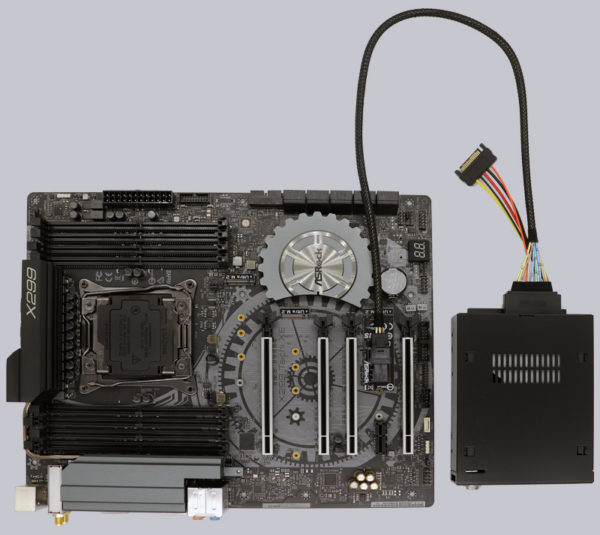
The ASRock U.2 Kit is simply screwed onto a M.2 slot. Usually the spacer screw of 2280 must be unscrewed and screwed in on 2260 before. Then the U.2 miniSAS HD plug of the cable can be plugged into the socket of the U.2 kit. Then the U.2 SSD needs power like a conventional SATA SSD, which is connected to the Delock U.2 cable with a SATA power connector.
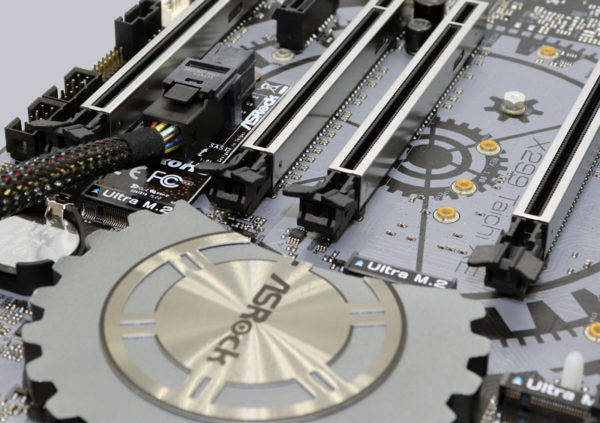
U.2 Test system …
This is what the nearly finished U.2 test system looks like.
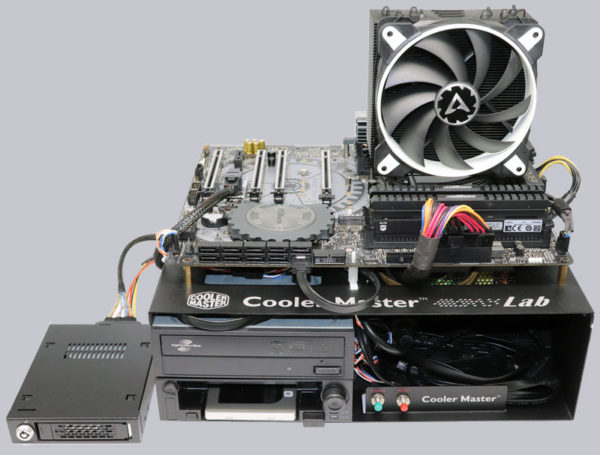
U.2 in Windows 10 and U.2 in Windows 7 …
Now comes the exciting moment, does the operating system recognize this configuration? Yes, it works, both in Windows 7 and Windows 10 it is recognized under memory controllers as “Standard NVM Express Controller” and under drives as CT1000P1SSD8 (this is the product code of the Crucial P1 1TB M.2 NVMe Gen3 x4 SSD).
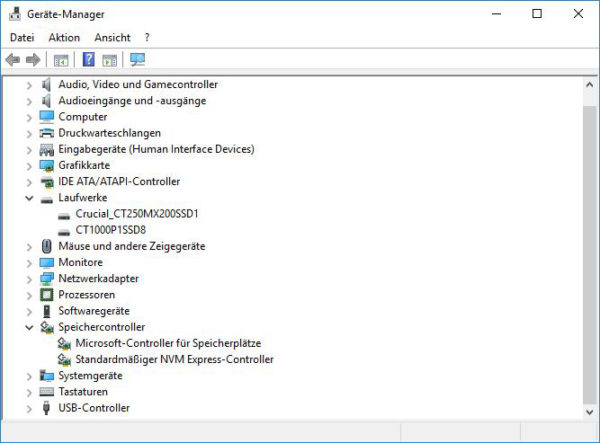
What we like very much is that Icy Dock has an activity LED (green) integrated in the removable frame. So you can see at a glance, for example, in a server or even in a client PC, which removable frame has been equipped and whether the SSD is currently active.
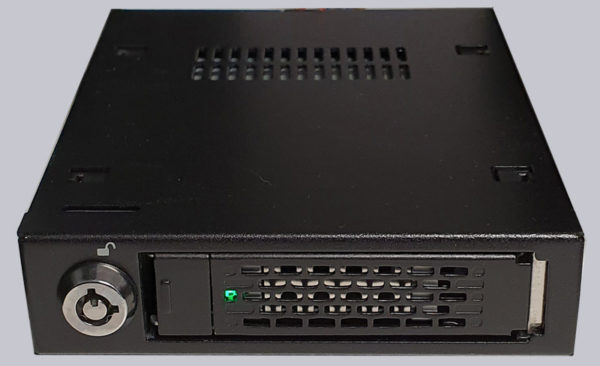
U.2 Benchmark …
At this point of the review, it becomes clear why we didn’t just test a 2.5″ U.2 SSD, but the combination of EZConvert adapter with NVMe SSD. Because the second exciting question is whether you lose stability or performance with the ASRock U.2 kit, the U.2 cable, the U.2 converter or the U.2 removable frame. Therefore, we first measure the performance of the Crucial P1 1TB M.2 NVMe Gen3 x4 SSD with U.2 components with the software AS SSD.
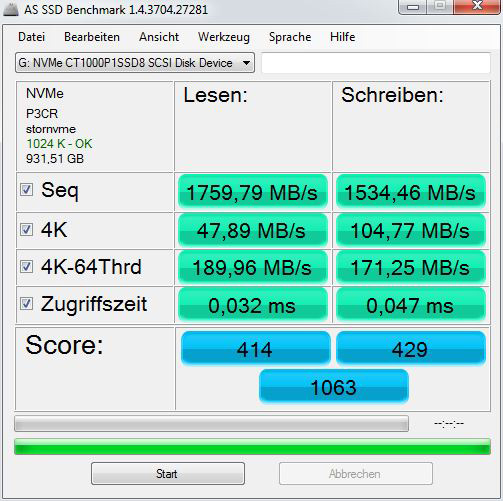
The comparison of the AS SSD benchmark with the identical Crucial P1 1TB M.2 NVMe Gen3 x4 SSD in the M.2 slot without any U.2 connection proves that there is no loss of performance at all! The benchmark (as well as further tests with several other benchmark tools) is almost as high except for the usual measurement tolerances.
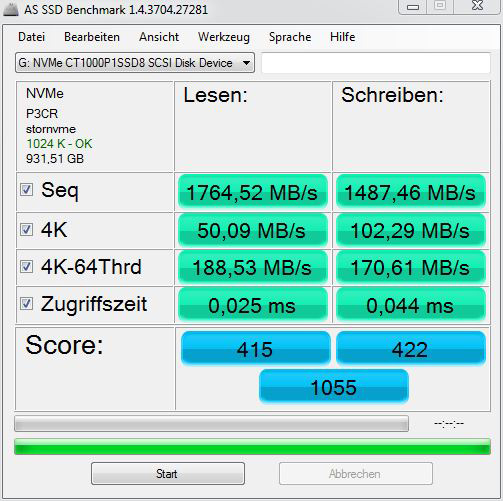
U.2 Temperature …
Another important criteria is the temperature. Especially high-end NVMe SSDs often reach extremely high temperatures. If these were to rise even further in a case, this would of course be bad. But our thermal imaging camera already gives the all-clear, because as you can see very clearly on the infrared thermal image, the enclosure does not have an isolating effect at all, in contrast to conventional plastic enclosures, but dissipates the heat exemplary on the tray and afterwards even on the bay. The bay is usually screwed into a metal PC case or server rack and also takes the heat away.
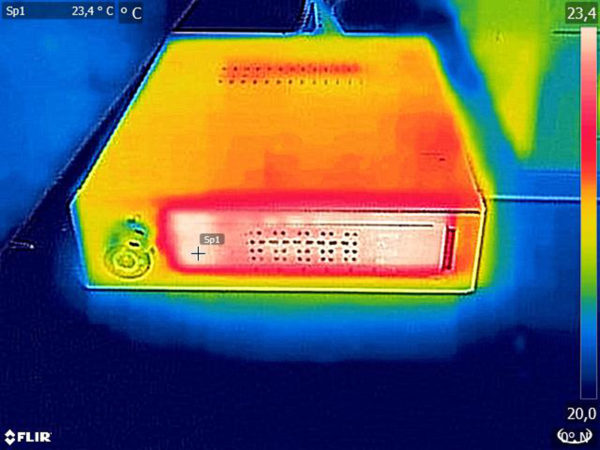
In addition to the thermal image, we measure the temperature of the SSD via the internal temperature sensor according to all our benchmarks and are thrilled with the result! Because we only reach 32°C.
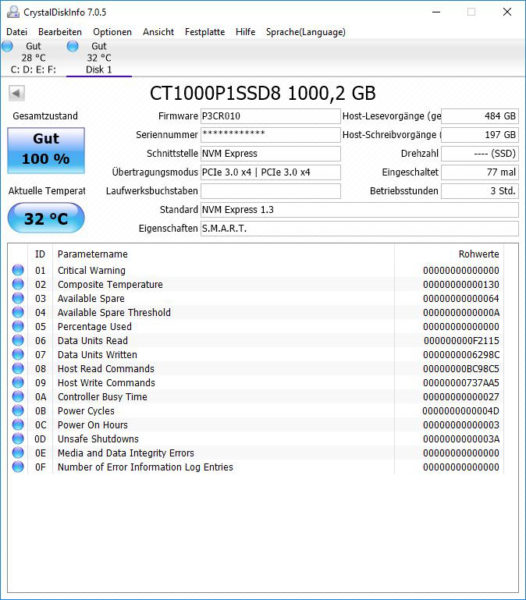
Now we compare this value with the identical Crucial P1 1TB NVMe SSD in the M.2 slot (without heat sink) and see that the temperature rises to about 50°C without a removable frame with a longer benchmark load. This is still completely OK, but clearly above the temperature value in the removable frame.
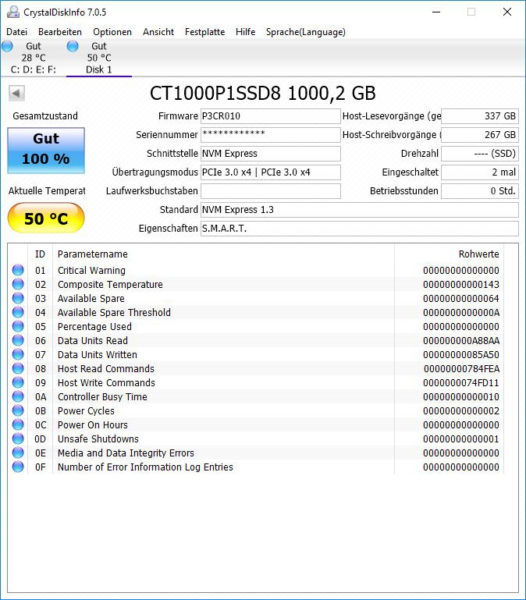
In addition to the hot-swap capability, the Icy Dock ToughArmor MB601VK-B U.2 hot-swap removable frame also achieves a significantly better temperature!
Let us now come to our conclusion.
Icy Dock MB601VK-B and MB705M2P-B and ASRock U.2 Kit Result and general impression …

